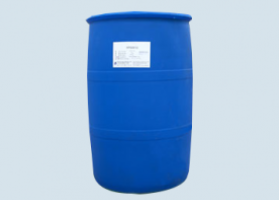The use of surfactants alone has little harm. There are two reasons for the damage to crops caused by surfactants in pesticides. One is that surfactants increase the solubility of drugs, and the other is the effect of surfactants on crops. For example, after spraying wheat chemical hybrid agent genesis, there is burning phenomenon on the last two leaves of plants.

The chemical structure factors of surfactants affecting crop damage include ionic type, alkane chain length of lipophilic group, alkyl type (straight chain or branched chain), hydrophilic base type, additional molecular number of ethylene oxide, etc. ② As a physical property, the relationship between critical micelle concentration, contact angle, surface tension and wettability of leaves should be considered. ③ The results showed that cationic active agent was easy to produce pesticide damage, and the order of damage was anionic and non-ionic, and the long chain of alkane chain was c8-12. ④ Branched chain is more harmful than straight chain, and hydrophilic groups (Ca +, K +, Na +, NH4 +) have little effect. ⑤ The more the ethylene oxide molecular number of nonionic surfactants, the smaller the damage.
However, surfactants can cause the following physiological changes in plants: membrane permeability changes, protoplasts stop flowing and separate, photosynthesis is inhibited, and subtle structural changes occur. Therefore, not all surfactants can be used in pesticides. The surfactant for pesticide should be selected according to the properties of the original drug, and its influence on the target should be considered.
For most pesticides, only formulations processed into appropriate formulations can be used. Under the situation of increasingly strong awareness of environmental protection, pesticide formulations are developing in the direction of water-based, granular, slow-release, multifunctional and labor-saving. Surfactant plays an important role in the development of a successful pesticide formulation, mainly in its wetting, dispersing, emulsifying, solubilizing and so on. At present, anionic and nonionic surfactants are mostly used in pesticides.
Because all kinds of surfactants have their own advantages and disadvantages, it is difficult to adapt to the processing needs of all kinds of pesticides. Therefore, most commercial products, such as emulsifiers, are of mixed type, including mixing between anionic and nonionic types, and also mixing between non-ionic types.